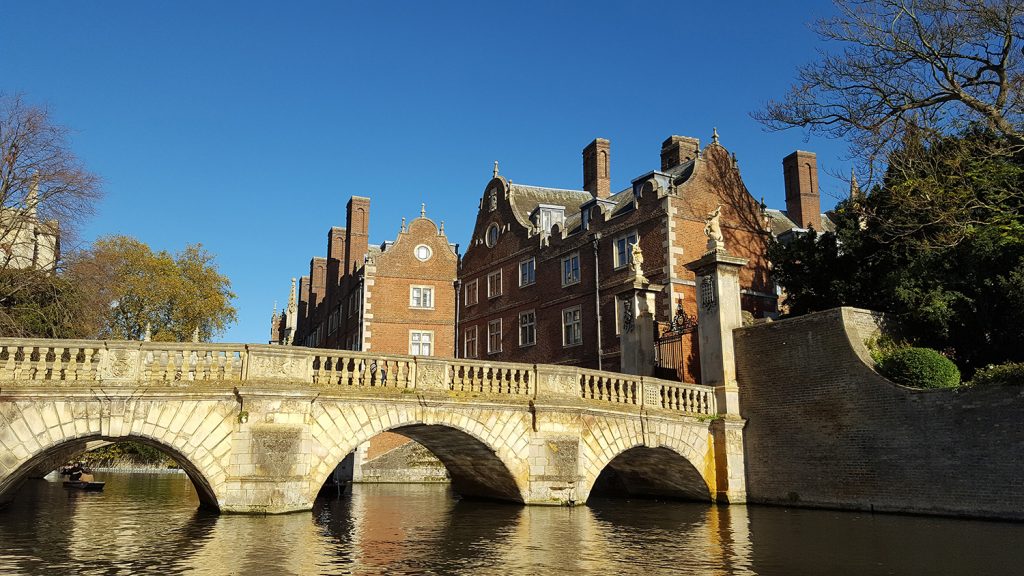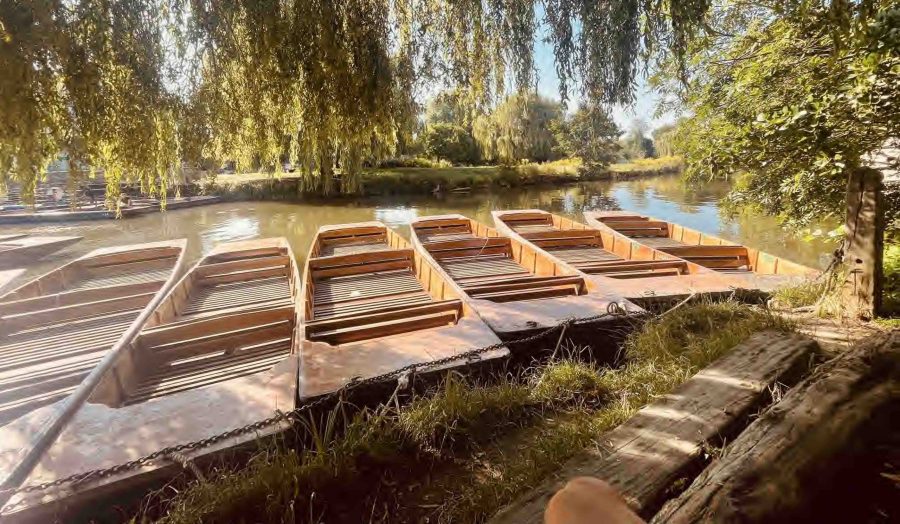The Kitchen Bridge, CAMBRIDGE

The Wren Bridge, most commonly known as 'The Kitchen Bridge'.
Designed and named after Sir Christopher Wren, The Wren Bridge is known most commonly as ‘The Kitchen Bridge’. Constructed between 1709 and 1713, the bridge was built by Robert Grunmbold, a local architect who had previously worked on The Wren Library at Trinity College. The bridge cost £1,353 in total, around £90,000 when adjusted for inflation.
Situated within St.John’s, The Wren Bridge is the second oldest bridge along the River Cam. Built to replace a pre-existing wooden bridge that was originally part of a public footpath. There has been a river crossing at the same location before the foundation of the college, when the site was a medieval hospital operated by monks.
The name ‘Kitchen Bridge’ comes from the fact when the New Court was built in 1831, students and fellows would need to cross the Wren Bridge on their way to the Buttery Dining Room across the river.
Two flood-marks can be seen from the river when heading upstream as you exit the right arch. The highest mark dates back to March 14th 1947. A great flood caused by heavy rain and thawing rivers caused over £12 million in damages, close to half a billion pounds in today’s money.
There are two yales standing on pillars above the gate leading to Third Court. Yales are a mythological creature and symbolic of the Beaufort family. They are creatures which have the head of a goat, body of an antelope and tail of an elephant. The horns on the head are said to spin around in order to detect external danger.
Want to see the kitchen bridge and its intricacies for yourself? Join a punting tour today.

